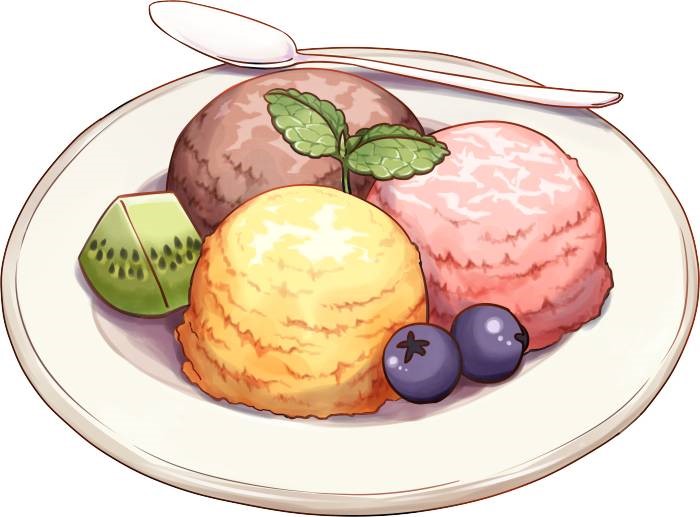
This is St. Bernard’s approximation of ice cream. Looks pretty good. The article is here in Japanese, but I largely cobbled together from the Jefferson museum and the internet at large.
The source can be found here.
“If he had not tasted it before, Jefferson no doubt encountered ice cream during his time in France (1784-1789), and it was made and served in his kitchens for the rest of his life. Among the items filling the 86 crates of belongings that Jefferson had shipped back from France were “quatre moule a glasse” [four ice molds].”
What’s this got to do with the navy? Well, similarity of general methods. It’s general knowledge that ice cream was a coveted morale booster. There’s plenty of legends out there (most of which are true) involving destroyers picking up downed airmen from carriers and getting X gallons of ice cream for their efforts.
The thing is, navy ice cream during WW2 is a little different from what we’d expect. Taken from the Cookbook of the US Navy:
Ice Cream should be a “regular” on the Navy menu. In addition to being one of America’s favorite desserts, ice cream is nourishing and economical.
The following directions, if carefully observed, will be helpful in producing ice cream of good quality.
Keep the freezer, utensils used in measuring the ingredients, ice cream cans and all other equipment scrupulously clean and properly sterilized.
Weigh or measure all ingredients accurately to insure uniformity, proper texture and pleasing flavor in the finished product.
Follow directions carefully.
It is important that the correct “overrun” be reached before the batch is drawn off from the freezer. The “overrun” which refers to the increase in volume, obtained by whipping air into the mix during the freezing process, may vary from 80% to 100%. An “overrun” of 100% is most commonly used in commercial practice.
A simple way to determine “overrun” is as follows : Weigh 1 cupful of the original mix, deducting the weight of the cup. When it is determined that the proper “overrun” has been reached, weigh 1 cupful of the ice cream and again determine the net weight. If the weight of the ice cream is just 50% of the weight of the original mix, the proper “overrun” of 100% has been obtained. For example, if the cup of mix originally weighed 8 ounces, the sample taken just before the batch is drawn should weigh 4 ounces. Ice cream with too much “overrun” will melt rapidly and show many air bubbles in the melted product.
Keep the blades of the freezer sharp and properly adjusted since faulty adjustment allows a thin layer of cream to freeze along the inside wall of the freezer. This tends to insulate the batch from the refrigerant and lengthens the freezing time and decreases the “overrun.”
Store the ice cream in a hardening cabinet or room at 10° F. below 0° F.
When serving, have the dispensing cabinet at 6° F. Use a “rolling” motion with the scoop. Digging or pushing the scoop into the ice cream will compress it and reduce the number of servings per gallon.
The ice cream came in a dry powder mix. You’re supposed to add water to it at cold temperatures (so not freezing – the manual says about 40-70 degrees (Fahrenheit)) and then freeze it down. The machine’ll do the stirring work for you (otherwise you’d have to stir for a long time) and you just have to draw the ice cream out into a can.
“What happened to pictures from Boston?”
Zero lost his camera. We’re in the process of getting it back.

So in the meantime have a long-haired Tiny E. 🙂
